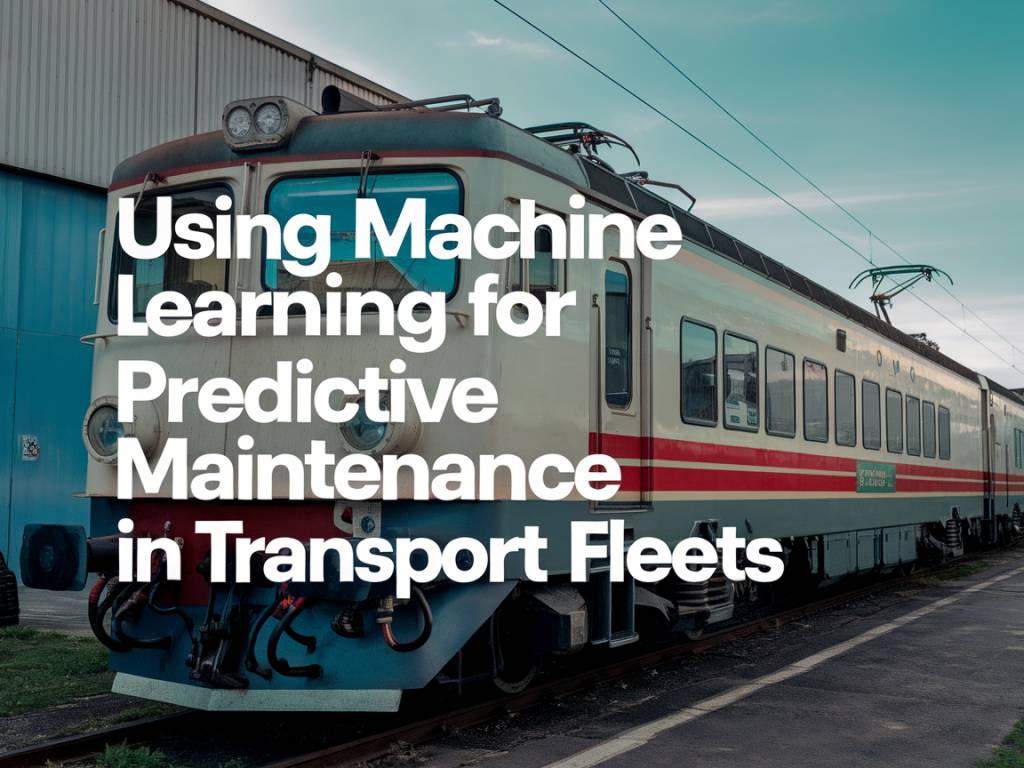In the rapidly evolving world of transport logistics, predictive maintenance is emerging as a game-changer. Leveraging machine learning for predictive maintenance in transport fleets not only boosts efficiency but also significantly reduces operational costs. This article explores how machine learning is reshaping fleet maintenance strategies, providing insights into its implementation and the benefits it brings to the logistics industry.
Understanding Predictive Maintenance
Predictive maintenance involves using data to predict when a piece of equipment will fail, allowing for preemptive repairs. Unlike reactive maintenance, which takes place after a breakdown, or preventive maintenance, which is scheduled at regular intervals, predictive maintenance relies on real-time data and advanced analytics to forecast potential issues. This proactive approach ensures minimal downtime and extends the lifespan of assets.
The Role of Machine Learning in Predictive Maintenance
Machine learning, a subset of artificial intelligence, involves training algorithms to identify patterns in data. For predictive maintenance, machine learning models analyze historical data, sensor readings, and other relevant information to predict equipment failures. These models continuously learn and improve over time, making predictions more accurate and reliable.
Advantages of Predictive Maintenance in Transport Fleets
Implementing predictive maintenance in transport fleets offers several advantages:
- Reduced Downtime: By anticipating and addressing maintenance needs before failures occur, fleet operators can significantly reduce unplanned downtime.
- Cost Savings: Predictive maintenance minimizes the need for emergency repairs and extends the lifespan of critical components, leading to substantial cost savings.
- Enhanced Safety: Regularly maintained vehicles are less likely to experience breakdowns, improving overall safety for drivers and cargo.
- Optimized Resource Allocation: Maintenance resources can be allocated more effectively, ensuring that technicians focus on vehicles most in need of attention.
- Data-Driven Decision Making: Real-time data analysis facilitates informed decision-making, enabling fleet managers to optimize maintenance schedules and strategies.
Key Components of a Predictive Maintenance System
A robust predictive maintenance system for transport fleets typically includes the following components:
- Sensors and IoT Devices: These devices collect real-time data on various vehicle parameters such as engine temperature, tire pressure, oil levels, and brake performance.
- Data Storage and Management: Efficient storage solutions are essential for handling large volumes of data generated by sensors. Cloud-based platforms are often used for scalable and secure data management.
- Machine Learning Algorithms: These algorithms analyze historical data and real-time inputs to predict potential failures and recommend maintenance actions.
- Dashboards and Interfaces: User-friendly dashboards provide fleet managers with insights and alerts, enabling them to monitor the health of their vehicles and make informed decisions.
- Integration with Fleet Management Systems: Seamless integration with existing fleet management systems ensures that predictive maintenance insights are actionable and easy to implement.
Implementing Predictive Maintenance in Transport Fleets
Implementing predictive maintenance requires careful planning and execution. Here are the key steps involved:
- Data Collection: The first step is to equip vehicles with sensors and IoT devices to collect relevant data. This includes information on engine performance, fuel consumption, driving behavior, and environmental conditions.
- Data Integration: Collected data must be integrated into a centralized platform for analysis. This often involves setting up cloud-based storage solutions that can handle large datasets.
- Model Training and Validation: Machine learning models are trained using historical data to identify patterns and correlations. Validating these models ensures they provide accurate predictions.
- Deployment and Monitoring: Once validated, the models are deployed and continuously monitored. Adjustments and refinements are made as more data becomes available and the models evolve.
- Actionable Insights and Maintenance Scheduling: Predictive insights are provided to fleet managers through intuitive dashboards, allowing them to schedule maintenance proactively based on the models’ recommendations.
Challenges and Considerations
While predictive maintenance offers numerous benefits, there are challenges and considerations to keep in mind:
- Data Quality and Consistency: Ensuring high-quality, consistent data is crucial for accurate predictions. Incomplete or biased data can lead to unreliable results.
- Integration Complexity: Integrating predictive maintenance systems with existing fleet management software can be complex and may require specialized expertise.
- Cost of Implementation: Initial setup costs for sensors, IoT devices, and data infrastructure can be high. However, these costs are often offset by long-term savings from reduced downtime and maintenance expenses.
- Scalability: As the fleet grows, the predictive maintenance system must scale accordingly to handle increased data volumes and ensure continued accuracy.
- Regulatory Compliance: Compliance with industry regulations and standards is essential, particularly regarding data privacy and security.
Case Studies: Success Stories in Predictive Maintenance
Many transport companies have successfully implemented predictive maintenance strategies with remarkable results. Here are a few examples:
- Company A: A large logistics firm integrated predictive maintenance into their fleet management system, leading to a 20% reduction in unscheduled downtime and a 15% decrease in maintenance costs over one year.
- Company B: A public transportation operator adopted machine learning-driven predictive maintenance, resulting in improved service reliability and enhanced passenger safety.
- Company C: A freight company used predictive maintenance to extend the lifespan of their vehicles, reducing capital expenditures on new fleet acquisitions.
Future Trends in Predictive Maintenance
The future of predictive maintenance in transport fleets looks promising, with several trends on the horizon:
- Advanced Analytics and AI: Continued advancements in artificial intelligence and analytics will enhance the accuracy and efficiency of predictive maintenance models.
- Integration with Autonomous Vehicles: As autonomous vehicles become more prevalent, predictive maintenance will play a critical role in ensuring their reliability and safety.
- IoT and Edge Computing: The proliferation of IoT devices and edge computing will enable real-time data processing and analysis, further improving maintenance predictions.
- Sustainability Initiatives: Predictive maintenance supports sustainability by extending the lifespan of vehicles and reducing waste, aligning with global sustainability goals.
- Collaboration and Data Sharing: Increased collaboration and data sharing among industry stakeholders will drive innovation and facilitate the development of more robust predictive maintenance solutions.
In conclusion, leveraging machine learning for predictive maintenance in transport fleets is revolutionizing the logistics industry. By adopting this proactive approach, companies can minimize downtime, reduce costs, and enhance the safety and reliability of their fleets. As technology continues to advance, the potential for predictive maintenance to transform fleet operations will only grow, making it an essential strategy for forward-thinking transport companies.



